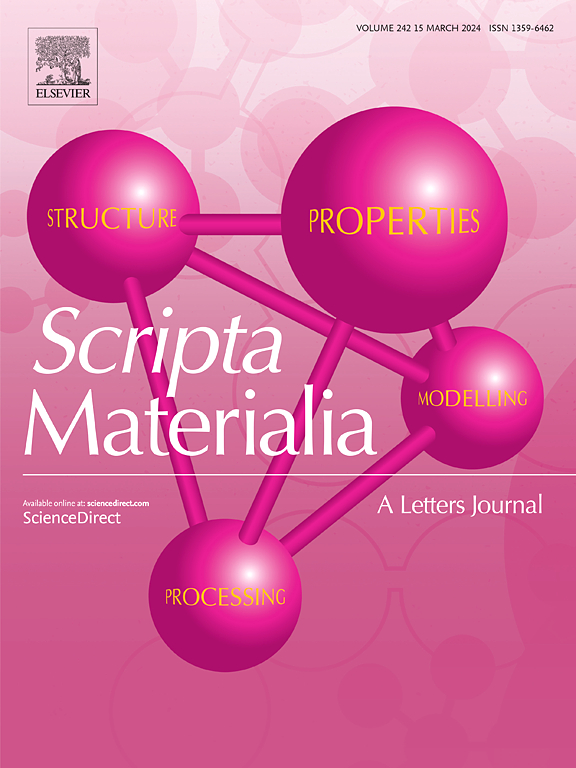bcc -高温合金的力学行为
IF 5.3
2区 材料科学
Q2 MATERIALS SCIENCE, MULTIDISCIPLINARY
引用次数: 0
摘要
以难熔元素为主的体心立方(BCC)基高温合金具有较高的熔点和由BCC固溶体及其有序的B2或L21相组成的相似的显微组织,是一种极具潜力的“超镍基高温合金”材料。BCC高温合金(包括铁素体和难熔高温合金)的力学行为是一个逐渐被研究的重要课题。然而,主要的挑战仍然是室温脆性和高温抗蠕变,以及由BCC-B2/L21相干组织变粗或脆性相析出引起的力学性能下降。本文着重讨论了BCC高温合金在不同体系下的性能和力学性能(强度、延性和蠕变)问题,并重点介绍了影响BCC高温合金性能的关键因素。然后讨论了这些高强度高温合金的延性挑战。同时,还将为开发新型BCC高温合金探索改善其力学性能的可能途径。本文章由计算机程序翻译,如有差异,请以英文原文为准。
Mechanical behavior of BCC-superalloys
Body-centered-cubic (BCC)-base superalloys primarily containing refractory elements have great potential as one kind of ‘beyond Ni-base superalloy’ materials, owing to their increased melting points and analogous coherent microstructures composed of BCC solid solution and its ordered B2 or L21 phases. The mechanical behavior of BCC superalloys (including ferritic and refractory superalloys) is a key topic that has been progressively investigated. However, major challenges remain in terms of room-temperature brittleness and high-temperature creep resistance, as well as mechanical property degradation induced by the coarsening of BCC-B2/L21 coherent microstructure or/and brittle phase precipitation. This viewpoint paper concentrates on the capability and issues regarding the mechanical behavior (strength, ductility, and creep) of BCC superalloys across diverse systems, in which the crucial influence factors are highlighted. Then the ductility challenges of these high-strength superalloys will be discussed. And possible approaches to improve mechanical properties will also be explored for developing novel BCC superalloys.
求助全文
通过发布文献求助,成功后即可免费获取论文全文。
去求助
来源期刊

Scripta Materialia
工程技术-材料科学:综合
CiteScore
11.40
自引率
5.00%
发文量
581
审稿时长
34 days
期刊介绍:
Scripta Materialia is a LETTERS journal of Acta Materialia, providing a forum for the rapid publication of short communications on the relationship between the structure and the properties of inorganic materials. The emphasis is on originality rather than incremental research. Short reports on the development of materials with novel or substantially improved properties are also welcomed. Emphasis is on either the functional or mechanical behavior of metals, ceramics and semiconductors at all length scales.
 求助内容:
求助内容: 应助结果提醒方式:
应助结果提醒方式:


